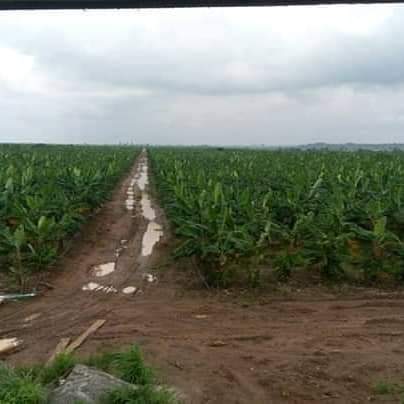Farm Layout & Analysis

Farm layout is the strategic arrangement of farm structures, fields, and other components to optimize production, efficiency, and sustainability. A well-designed farm layout considers various factors to create a functional and profitable operation. Here's a breakdown of key aspects:
Importance of Farm Layout:
- Efficiency: A good layout minimizes travel time between different areas of the farm, saving labor and resources. Efficient movement of equipment, animals, and produce is crucial.
- Resource Management: Proper layout optimizes the use of water, land, and other resources. This includes efficient irrigation systems, proper drainage, and minimizing soil erosion.
- Biosecurity: A well-planned layout can help control the spread of diseases and pests by strategically separating different areas and implementing biosecurity measures.
- Environmental Sustainability: A good layout considers environmental factors like wind direction, sunlight, and water flow to minimize environmental impact and promote sustainable practices.
- Profitability: By optimizing efficiency and resource use, a well-designed farm layout contributes to increased productivity and profitability.
- Aesthetics and Functionality: A well-organized farm is not only functional but also aesthetically pleasing, which can be important for marketing and farm visits.
Factors to Consider When Designing a Farm Layout:
- Type of Farming: The specific type of farming (e.g., crop farming, livestock farming, mixed farming) will significantly influence the layout.
- Land Topography: The slope and elevation of the land will affect drainage, irrigation, and accessibility.
- Soil Type: Different soil types have different properties that affect crop growth and water retention.
- Climate: Climate conditions such as rainfall, temperature, and wind direction will influence the placement of structures and fields.
- Water Availability: Access to water is crucial for irrigation and livestock. The layout should consider water sources and distribution systems.
- Infrastructure: Existing infrastructure like roads, power lines, and water lines should be considered when designing the layout.
- Accessibility: The layout should ensure easy access to all areas of the farm for workers, equipment, and transportation of produce.
- Future Expansion: The layout should allow for future expansion of the farm without major modifications.
- Regulations and Permits: Local regulations and permits related to land use, environmental protection, and building codes must be considered.
Elements of a Farm Layout:
- Fields: The arrangement and size of fields should be optimized for efficient planting, cultivation, and harvesting.
- Buildings and Structures: The placement of barns, sheds, storage facilities, and other buildings should be convenient and functional.
- Roads and Pathways: Roads and pathways should provide easy access to all areas of the farm.
- Irrigation and Drainage Systems: Efficient irrigation and drainage systems are essential for crop production.
- Water Sources: The location of wells, ponds, and other water sources should be considered.
- Livestock Areas: For livestock farms, the layout should include pastures, pens, and other facilities for animal care.
- Waste Management Systems: Proper waste management systems are essential for environmental sustainability.
- Windbreaks and Shelterbelts: Trees and shrubs can be strategically planted to provide windbreaks and shelter for crops and livestock.
Tools and Techniques for Farm Layout Design:
- Sketching: Start with a rough sketch of the farm layout, considering the factors mentioned above.
- Surveying: Accurate surveying of the land is essential for creating a precise layout.
- Mapping Software: GIS software and other mapping tools can be used to create detailed farm maps.
- Consultations: Consult with agricultural experts, engineers, and other professionals to get advice on farm layout design.
A well-planned farm layout is a crucial investment that can significantly impact the success and sustainability of a farm. By carefully considering the various factors involved, farmers can create a functional and profitable operation.


